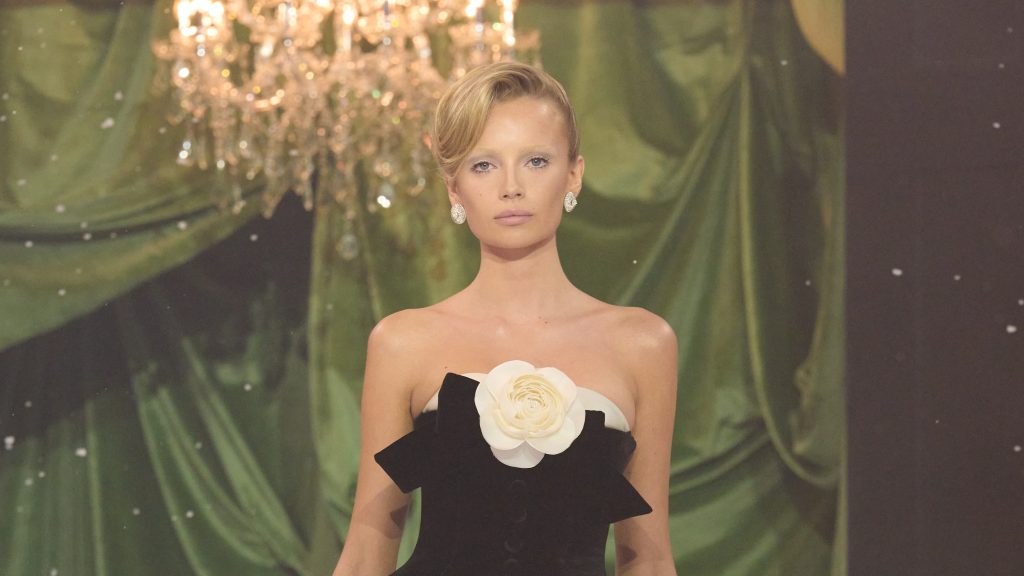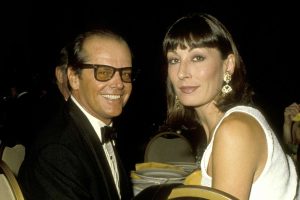A house with a Georgian facade, faux railings and “Richard Quinn” engraved above the door. The set for this winter’s night show was escapist fantasy on a grand scale. “It’s after midnight, at the end of a private black tie party,” Quinn related. “Maybe it’s a pre-wedding dinner or a day-after celebration—and the guests are leaving. It’s snowing, and the moon has risen.”
Quinn’s “guests” streamed forth in a cavalcade of black and white dresses—a profusion of 1950s and ’60s haute couture silhouettes, corseted bells, draped pannier skirts, swathed necklines, satin bows implanted with rose corsages. Sequined embroidery sparkled as far as the eye could see through the falling “snow.”
What, no print? Well, some of the stylized cabbage-roses Quinn is associated with did turn out towards the end, but his main point was getting away from all that busy, exuberant color. “I thought about the tuxedo suit, and that idea of idea black and white, black and ivory—and doing it in a very chic, elegant way that isn’t a dinner jacket,” he said.
Several models had white tulle veils pinned to the back of their hair. Enter the brides. Eventually, they all reappeared for the finale, looking out of every window in the house.
For all of Quinn’s fairytale romanticism, his real house is no castle in the air. In his south London establishment, he has a thriving demi-couture and bridal business, fully-staffed atelier, and a showroom for private fittings. His wealthy international clients, some of whom were wearing Richard Quinn in the front row, know that he has a tailoring service, which will fly to wherever. “Now it’s like end-to-end service,” he said. “We’re flying people around the world directly, but everything’s made by everyone here, effectively, except for the embroideries, which are done in India.” That’s as well as the Richard Quin print works, at the front of the building, which helps design and fulfill commissions from designers and brands of many sizes.
In a strange way, Quinn stands in the long tradition of British court dressmakers—designers like Bellville Sassoon and Victor Edelstein in the 1980s who dressed the ingenue Princess Diana and ‘society’ ladies. For those who disparage young London designers for being too small and weak to be able to ‘scale’ in an entrepreneurial way, that’s quite an-opener.
Perhaps even more important to Quinn is the showmanship he enjoys. “I want to do shows that look like they could be in Paris. But I don’t want to be in Paris,” he said. “I’m born in London, I’m London based, London-centric. It’s all about doing something really special here, amplifying it to the world, and being a global business.”








